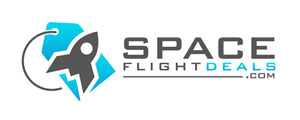SpaceX Remain in the Space Tourism Race
Recent events have made it seem as if the battle to launch regular tourist trips to space was a two horse race. Jeff Bezos’s Blue Origin and Sir Richard Branson’s Virgin Galactic had both launched their owners into space accompanied by a fanfare of worldwide publicity
Meanwhile, SpaceX’s Elon Musk remained firmly earth-bound. His company seemed more focused on its collaborative projects with NASA. These included regular launches carrying both cargo and astronauts to the International Space Station (ISS), and collaborating on NASA’s Artemis project to put humans back on the Moon.
Against this background, SpaceX’s spectacular Inspiration4 mission is a real game changer. Launched on September 15th using the company’s Dragon capsule, this trip is ground breaking in so many ways. It easily surpasses the efforts of Musk’s two billionaire rivals.
For a start, Musk’s mission is the first to carry an all civilian crew. The trip was financed by billionaire payment processing company CEO Jared Isaacman. The 38 year old is a qualified pilot, so he was a good choice for mission commander. He was accompanied by Hayley Arceneaux an employee and former patient at St Jude Children’s Research Hospital in Tennessee – the cause Isaacman is raising money for; Chris Sembroski, an employee of US aircraft and defence manufacturer Lockheed Martin who was gifted his seat courtesy of a friend who had made a substantial donation to St Jude’s; and finally Dr Sian Proctor. She is also a pilot, and currently works as a professor of geoscience at South Mountain Community College in Phoenix, Arizona. She won her seat after being selected as a worthy customer of Isaacman’s Shift4 Payments company.
The firsts don’t stop there though. Bezos and Branson’s flights were brief to say the least. Neither was weightless for more than a few minutes. Indeed, Bezos’s entire mission from launch to landing lasted barely ten minutes. By contrast, the Inspiration4 flight lasted three whole days.
Furthermore, Bezos and Branson barely made it to space. Bezos peaked at around 107km above the Earth – just surpassing the 100km Karman Line accepted by many as the official boundary of space. Branson didn’t even make it that far, topping out at around 86km. The four astronauts on board the Inspiration4 mission reached far higher – up to around 575 km above the Earth. This is higher than the orbit of the ISS, and the furthest astronauts have ventured from the Earth’s surface since the days of the Space Shuttle.
And while Bezos and Branson’s missions were sub-orbital, up-and-down affairs, Inspiration4’s Dragon capsule was in orbit, completing more than forty round the world trips before finally splashing down back in the Atlantic Ocean.
What are the Implications for Space Tourism?
OK, this was yet another space flight funded by a billionaire. But his three passengers were ‘ordinary tourists’ in the sense that they did not have to pay hundreds of thousands of dollars for their seats.
In the long term, the likelihood is that the space tourism will follow a similar pattern to long haul air travel: trips will become more affordable as increasing competition and frequency of flights drives down prices.
In the shorter term, SpaceX’s longer missions, with higher altitude orbital flights, offer a clear opportunity for potential commercial sponsorship. Big companies could ‘sponsor’ SpaceX Dragon launches to run their own experiments. They could also offer seats on their flights as prizes or rewards for employees and customers. This would generate excellent publicity to go along with any commercial or industrial benefits.
In this way, trips to space would be affordable in the sense that their passengers would not be paying! For the fortunate employee, that would be quite a business trip, while for the lucky customer that’s a pretty decent loyalty bonus or raffle prize…
